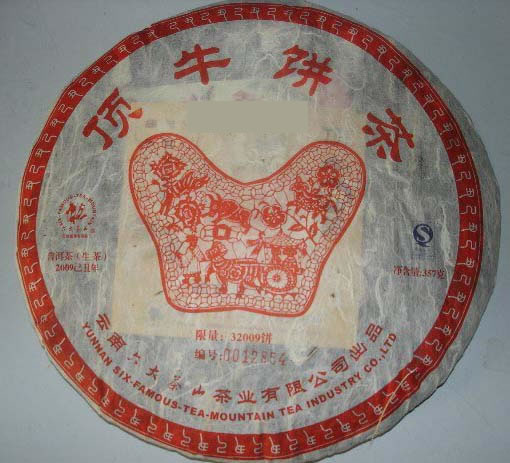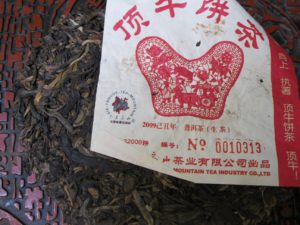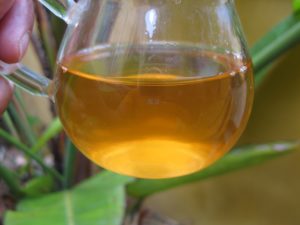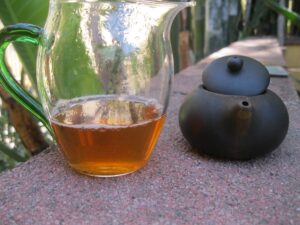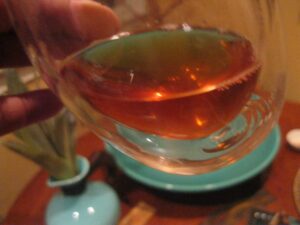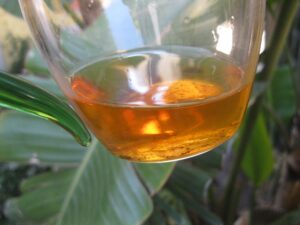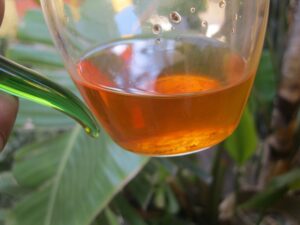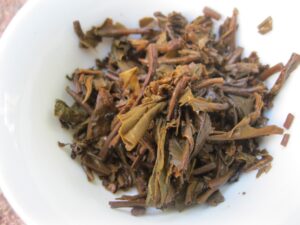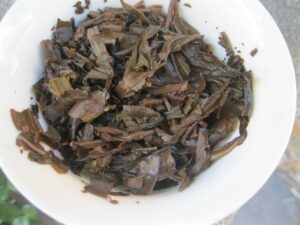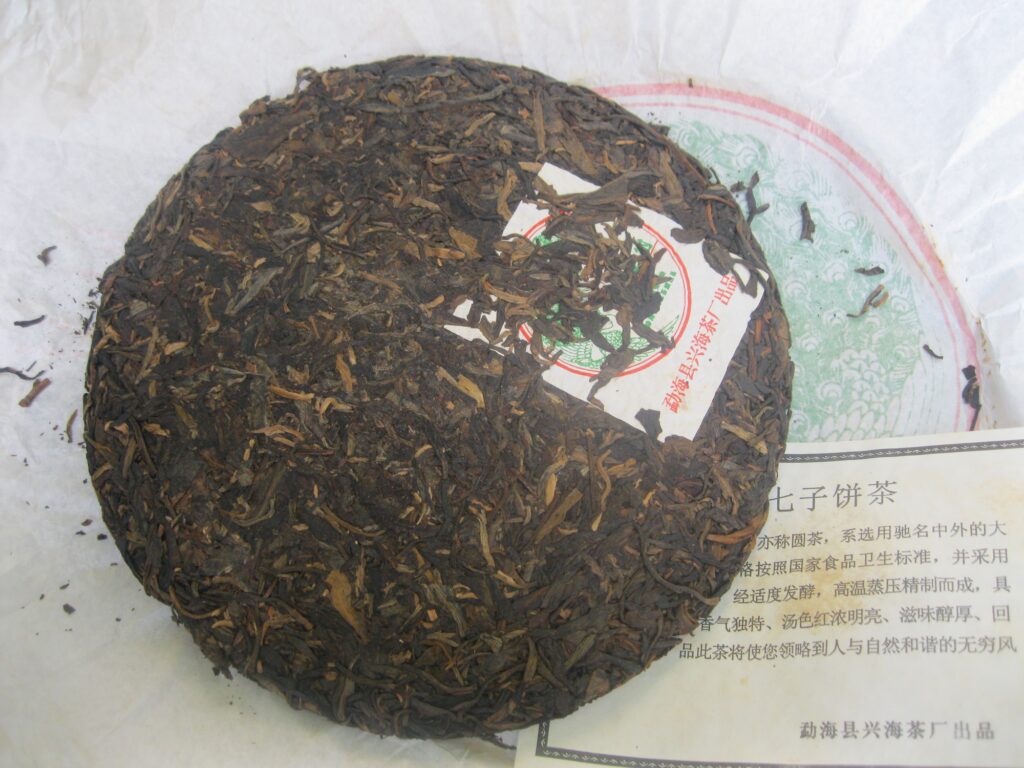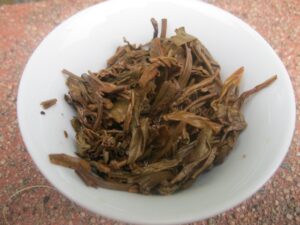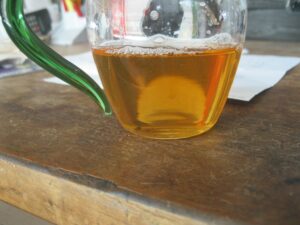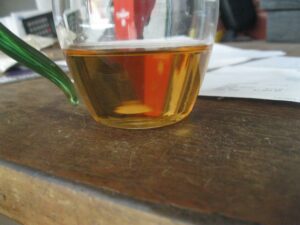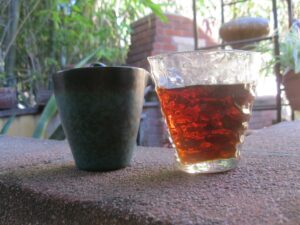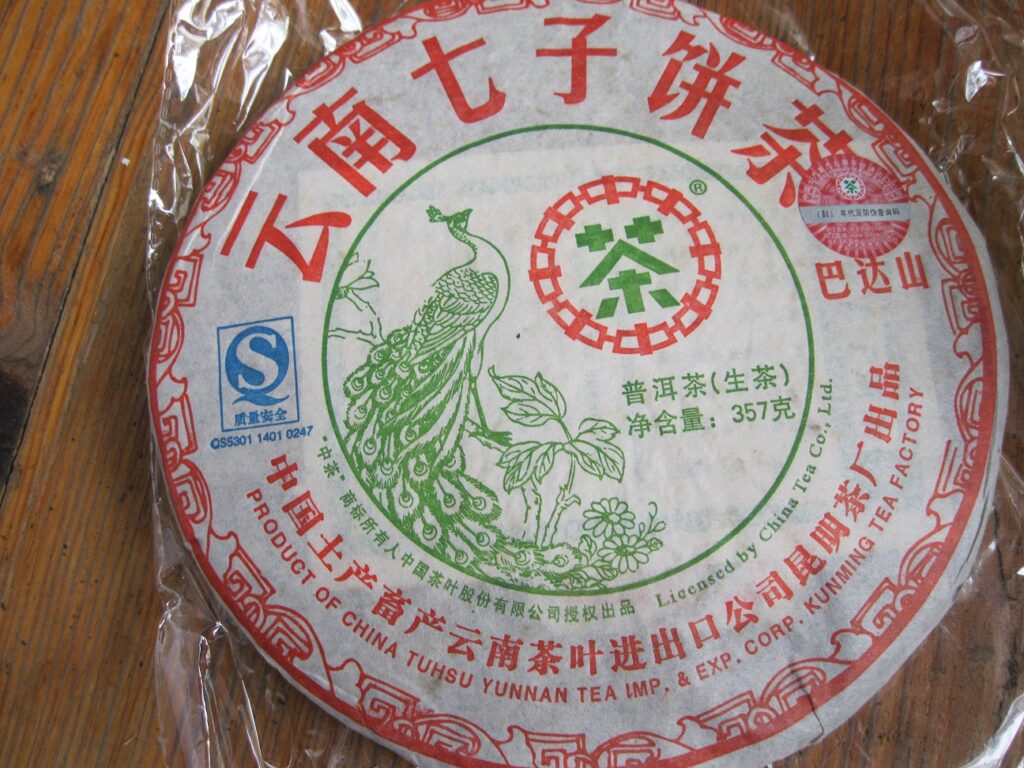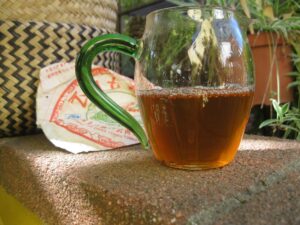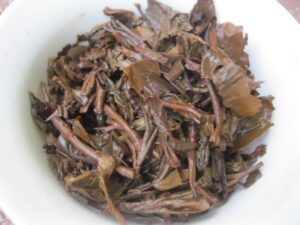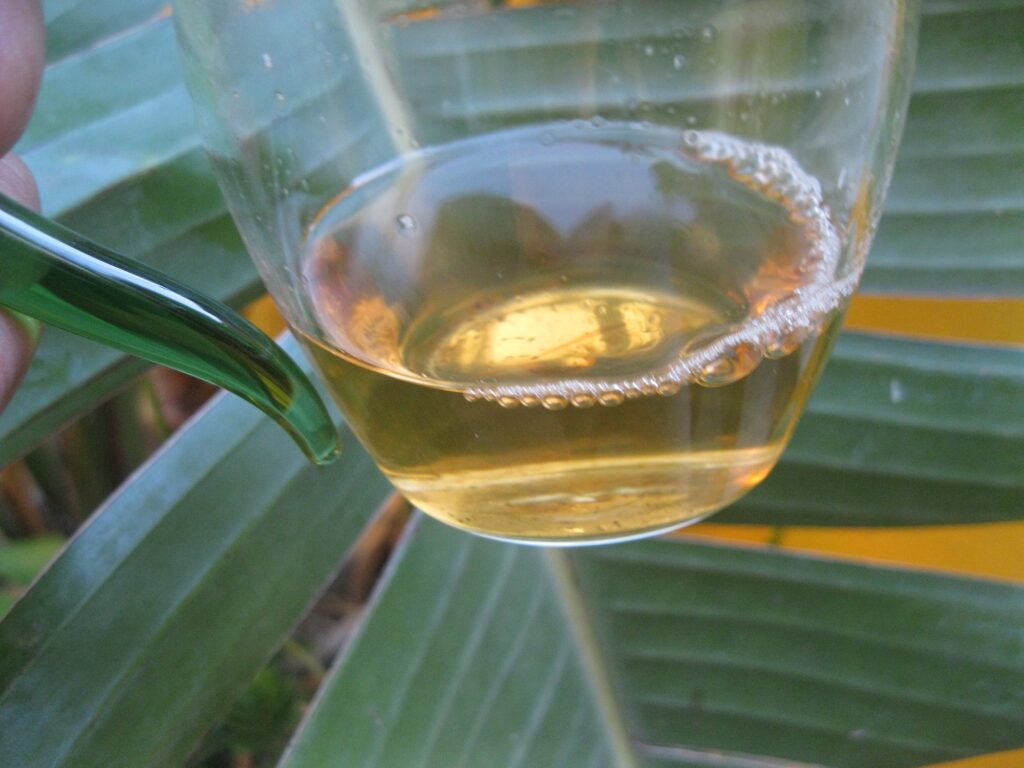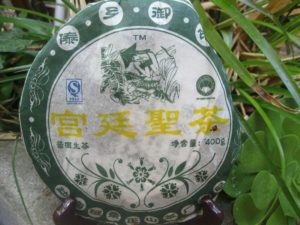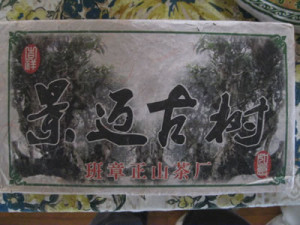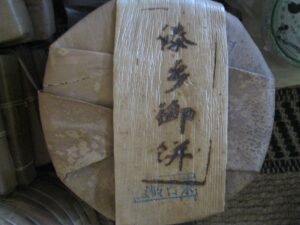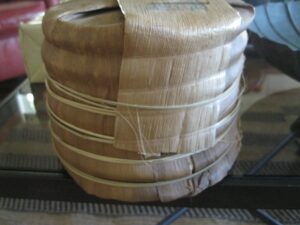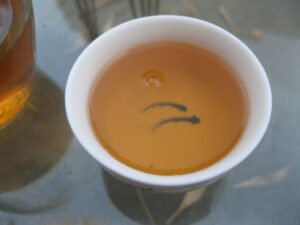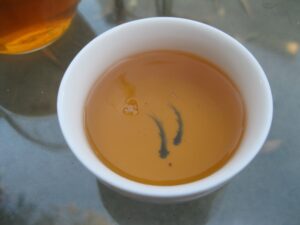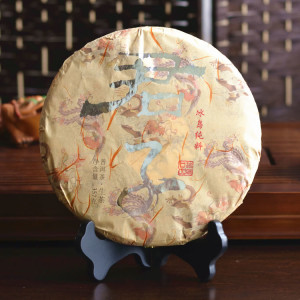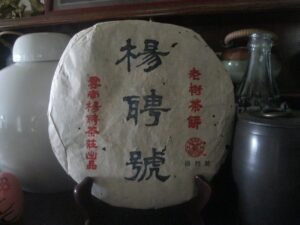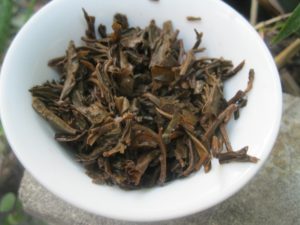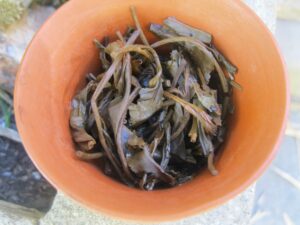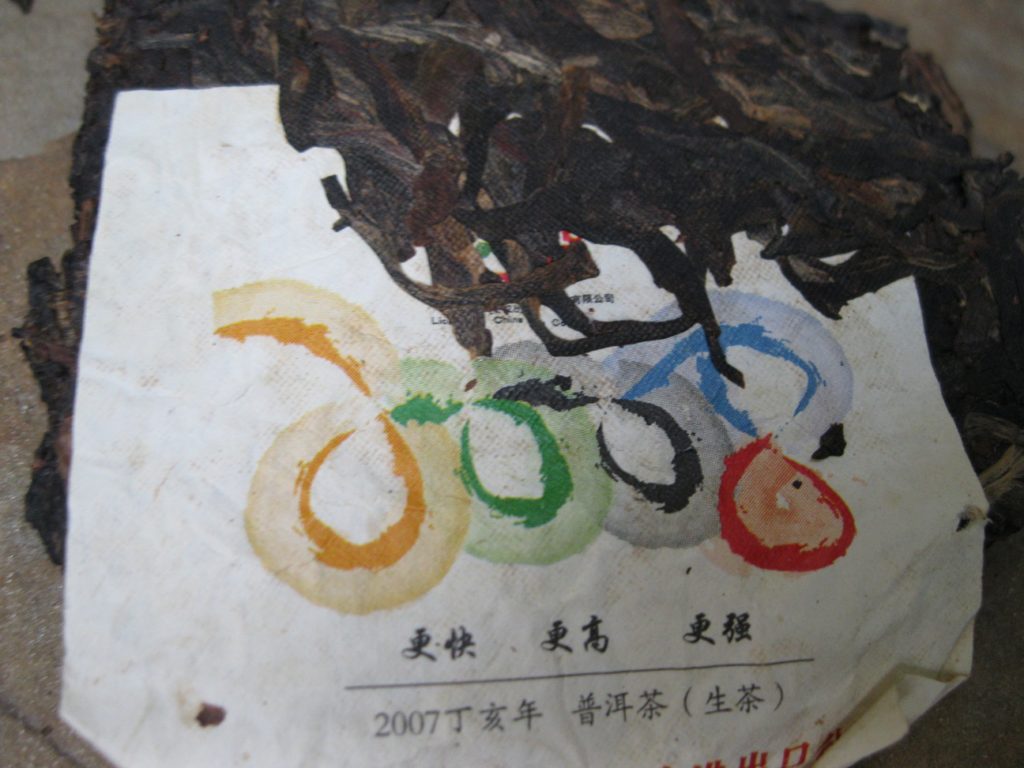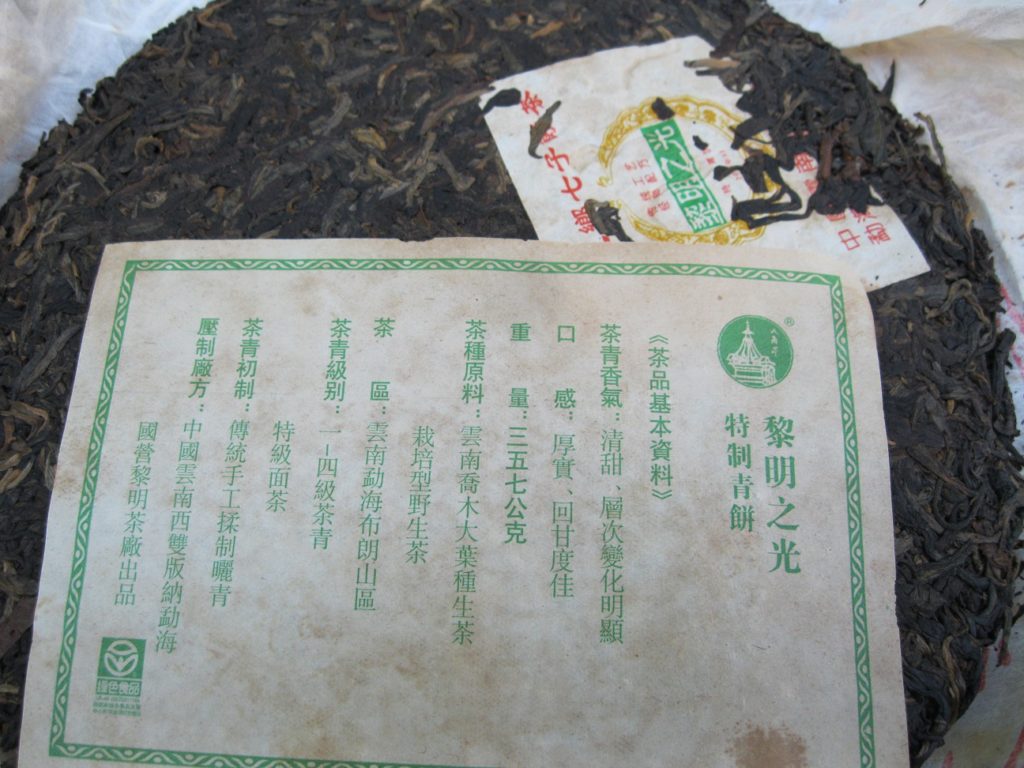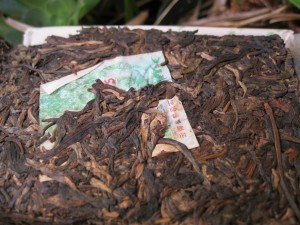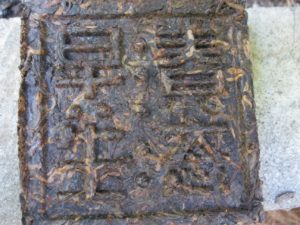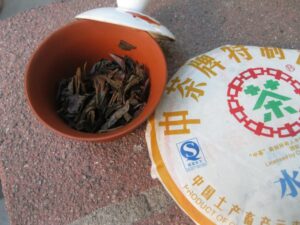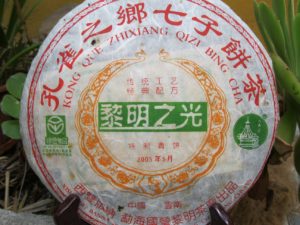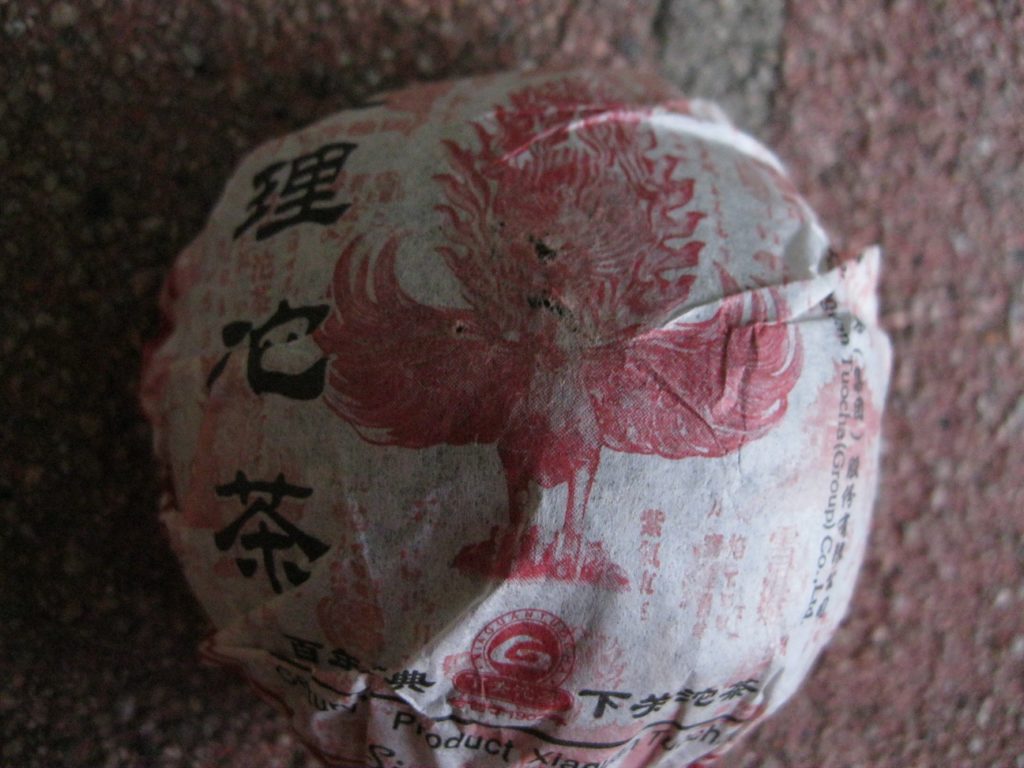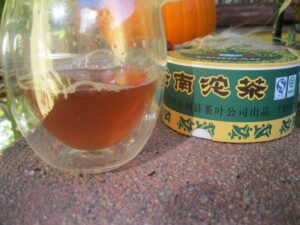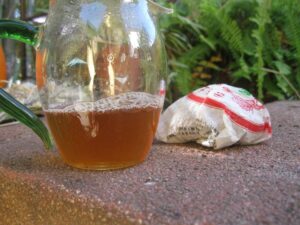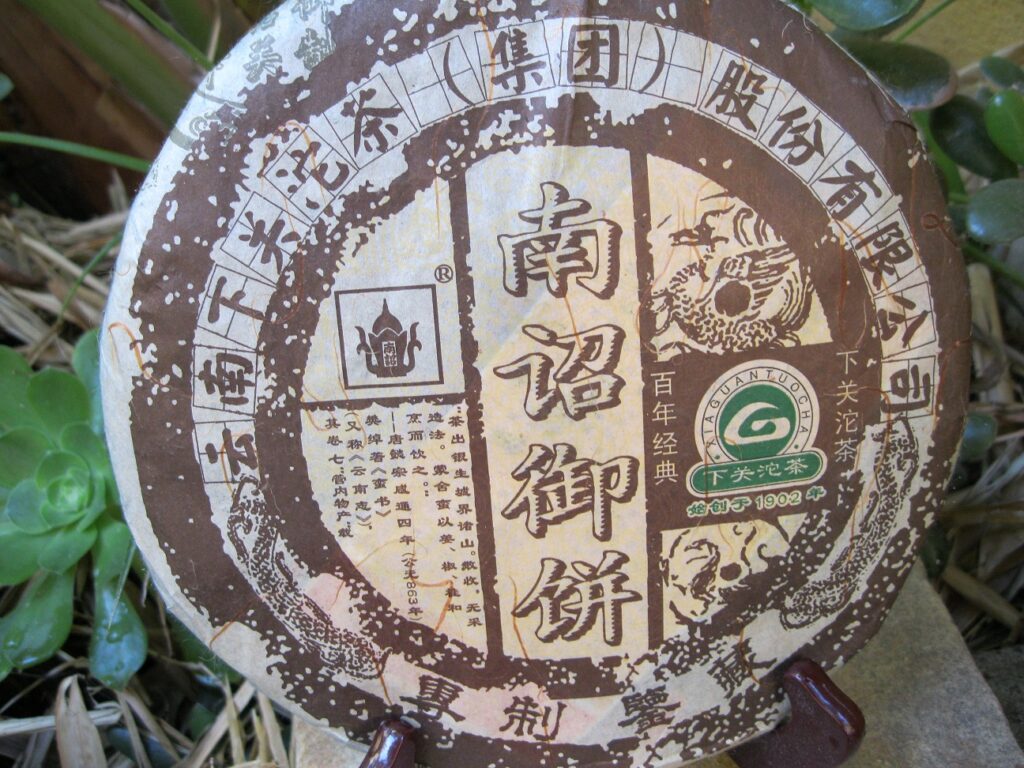Ox 6FTM Retrospective
Let’s take a journey, an Ox 6FTM Retrospective if you will. It’s the ’09 offering in the 6FTM Zodiac/Lunar Series. The Puerh Junky is in possession, covetously I might add, of them all, though some have never been touched. If memory serves, the Ox may have been the first in the series acquired back in ’15.
The Ox is the first year of the series that was moderately pressed. It was also wet-stored. Here’s a shot from 2016.
That foto includes the pot reserved for floral productions. It’s 150ml. The pour is fairly slow, so I go with less leafage, perhaps about five grams. Here’s a shot from 5 March ’22, evening sesh. It’s actually as dark it looks. I was shocked.
Yeah, it’s a bit blurry. Opening infusions are very smooth. There’s something quite genteel to it in contrast to the Rat and Pig. Here’s a couple shots from the morning, 6 March 2022. The first about 15s and the second a good push of a minute or so.
Nice sparkle, matched in taste.
Light doesn’t catch the same here. Same clarity actually. Not as floral as the evening before with more minerality along with tame humidity. Here’s cashed leaves from ’16.
Here’s the same leaf action in ’22.
There you have it. The ’09 Ox, 6FTM.

